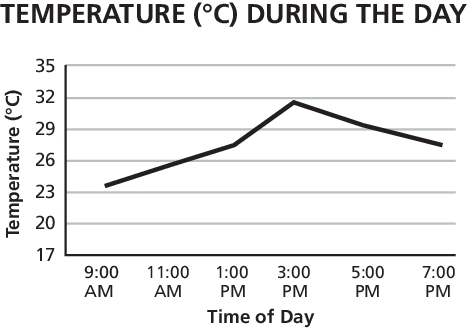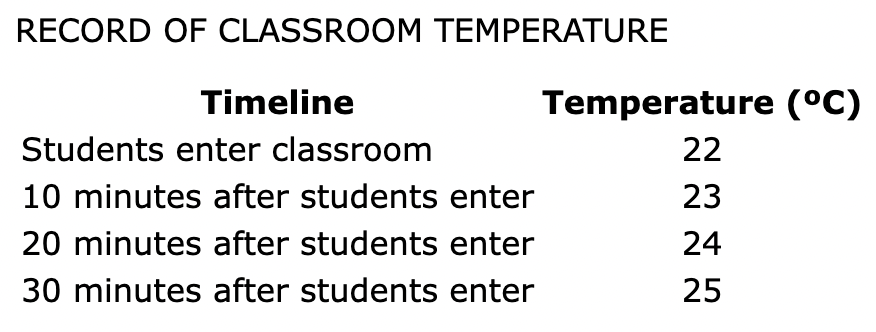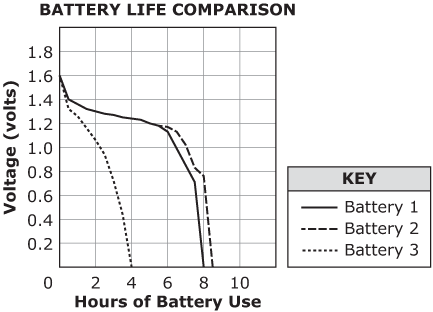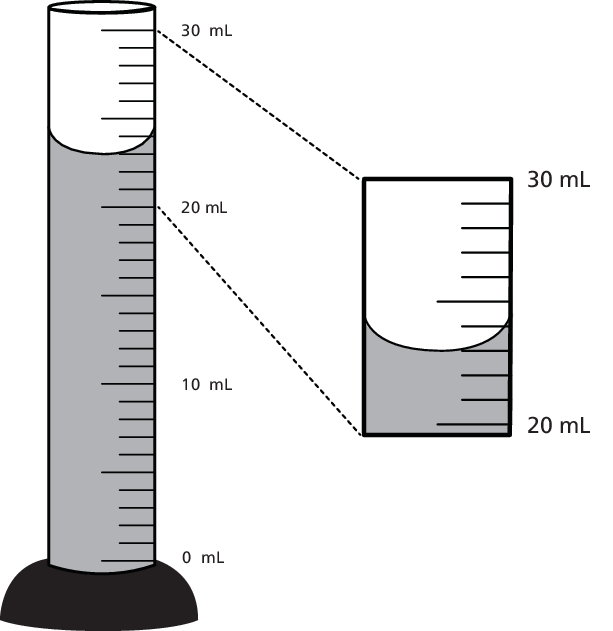Scientists make observations, conduct experiments, and draw conclusions. Which statement is true of ALL scientists?
A. Scientists study living things.
B. Scientists study the natural world
C. Scientists study items found on Earth
D. Scientists study things found in outer space
B. Scientists study the natural world
A scientist plans to create a model of a coral reef. What must the scientist do when building the model?
A. include the most important parts
B. use a computer to build the model
C. build the model the same size as the reef
D. build the model so that it can be taken apart
A. include the most important parts
What would be the proper tool to use to measure how much water it would take to fill a small bowl?
A. ruler
B. scale
C. beaker
D. graduated cylinder
D. graduated cylinder
Theo creates an experiment in which he rolls toy cars down a ramp and records the time and distance they travel. He computes their speed and compares the average speeds of the cars.
Which method is the least accurate way to communicate the results of his experiment?
A. a list with the average speeds
B. a picture of the cars and the ramp
C. a table of the cars and average speeds
D. a graph of the cars and average speeds
B. a picture of the cars and the ramp
A scientists looks at a graph of the results of their experiment. They draw a conclusion about the results. What is one way a scientist uses their conclusions?
A. to decide whether their results support their hypothesis
B. to decide whether their hypothesis is correct
C. to decide whether they should make a different conclusion
D. to decide whether they should share their results with others
A. to decide whether their results support their hypothesis
Scientists use different models depending on the subject they are studying. What is true about all models?
A. Models are made by humans
B. Models represent one object in time
C. Models are the same size as the object they represent
D. Models include every detail of the object they represent
A. Models are made by humans
A student must add exactly 15.2 milliliters (mL) of water to the mixture she and her partner are making.
Which tool should she use to measure the water?
A. graduated cylinder
B. beaker
C. stopwatch
D. thermometer
A. graduated cylinder
The graph below was created by students using temperature in degrees celsius (°C).

Which of these statements is an observation that can be made from the graph?
A. The Sun is setting at 7:00 pm.
B. The temperature is highest at 3:00 pm because the Sun is the strongest.
C. The temperature is the lowest at 9:00 am because the Sun just came up.
D. The hottest part of the day is at 3:00 pm.
D. The hottest part of the day is at 3:00 pm.
Kwan asks people in his class to report how many times per week they recycle. Kwan asks friends in two other classes to collect reports from their classmates, too. What is true about Kwan's investigation?
A. It involves collaboration.
B. It follows the scientific method.
C. It produces results that don't change.
D. It explains why people recycle.
A. It involves collaboration.
Vanessa reads that a bird's bones are hollow, but strong. Vanessa wants to build a three-dimensional model of a bird. Which material would be her best choice to use for the bones in the model?
A. toothpicks
B. modeling clay
C. blades of grass
D. drinking straws
D. drinking straws
Jennifer and Thomas are working together on an experiment. Each student must choose a tool to work with. Jennifer chose a thermometer and Thomas chose a graduated cylinder. What measurement will Thomas record?
A. mass
B. temperature
C. time
D. volume
D. volume
Thirty students enter a classroom and measure and record the air temperature in the room every ten minutes. Their data is shown in the table below.

The students want to distinguish between observations and inferences. Which of these is an inference that can be drawn based on the data collected?
A. Temperatures rise 1°C every ten minutes.
B. More students enter the classroom every ten minutes.
C. The temperature was 21°C before the students entered the classroom.
D. Combined student body heat causes the temperature in the classroom to rise.
D. Combined student body heat causes the temperature in the classroom to rise.
Franz wants to investigate moon craters. He drips water into a shallow pan of flour. He holds the dropper at a different height each time he moves to a new area of the pan. Franz observes that the water drops make dents of differing sizes in the flour. Which type of experiment is Franz conducting?
A. modeling
B. surveying
C. classifying
D. directly studying
A. modeling
Thad looks at a photograph of a tadpole. He wonders how the tadpole's body changes as the tadpole grows. What type of model would be most useful for Thad to observe?
A. A set of plastic models of two different types of frogs
B. a computer animation that follows a frog through its life cycle
C. a set of diagrams that shows the different parts of a frog's body
D. a photograph of a tadpole and a photograph of a fully grown frog
B. a computer animation that follows a frog through its life cycle
A scientist is investigating the amount of wood a termite colony eats in a certain amount of time. She measures the mass of a piece wood at the start of the investigation. After one month she measures the mass of the remaining wood.
Which tool should she use to make the measurements?
A. a beaker
B. a ruler
C. a stop watch
D. a scale
D. a scale
The graph shows a comparison of several batteries.

Which statement is an accurate observation?
A. Battery 2 lasted longer than battery 1 and battery 3.
B. Battery 1 lasted approximately 9 hours longer than battery 3.
C. At the six-hour mark, the voltage of battery 3 and battery 1 were the same.
D. At the two-hour mark, the voltage of battery 3 and battery 1 were the same.
A. Battery 2 lasted longer than battery 1 and battery 3.
Taylor wanted to determine if watering plants makes a difference in their growth. During her investigation she watered only one of two plants. After a few days, she noticed that the plants looked different. What science skills did Taylor is when she noticed that one of the plants was drooping?
A. communication
B. investigation
C. observation
D. prediction
C. observation
Amy is creating a model of the solar system for a class presentation. Which two-dimensional model could Amy use to show planets in the solar system?
A. planets made of foam balls
B. planets made of modeling clay
C. planets drawn to scale on a colorful poster
D. planets made of paper attached to a mobile with string
C. planets drawn to scale on a colorful poster
Nick measures a volume of water using the graduated cylinder shown below.

What is the volume of water Nick measured in the graduated cylinder?
The volume is 23 mL.
Some flowers only come with white petals. Florists can change their color using dyes or food coloring. Jamal is doing an experiment using three white flowers. He is testing to see if the white flower will change color faster with different colored dyes. For his experiment, he places the stem of each of three white carnation flowers in cups of 100 milliliters (mL) of water and 20 drops of food coloring. The table below shows Jamal's results.

Based on his results, Jamal concluded that the white flower will change color faster with different colored dyes. However, Jamal looked at the data table more carefully and noticed that there was a mistake in his experiment that made his conclusion wrong.
What mistake did Jamal make in his experiment?
A. He used different lengths of stems.
B. He used different amounts of water.
C. He used a different number of flowers.
D. He used a different amount of food coloring.
A. He used different lengths of stems.